Explore 20-unit apartment building plans with detailed PDF designs, offering efficient layouts, space optimization, and compliance with modern architectural standards for developers and architects.
1.1 Overview of Apartment Building Design
Apartment building design focuses on creating functional, efficient layouts that maximize space while ensuring comfort and accessibility. For a 20-unit apartment building, designs often include multiple floors with strategically distributed units, common areas, and amenities. Architects prioritize natural light, ventilation, and modern aesthetics. Sustainable practices, such as energy-efficient systems and green materials, are increasingly integrated. Floor plans are tailored to meet diverse resident needs, ensuring a balance between privacy and community spaces, while complying with local building codes and regulations for safety and accessibility.
1.2 Importance of Floor Plans in Apartment Buildings
Floor plans are essential for apartment building design, providing a clear layout of units, spaces, and amenities. They ensure efficient use of space, guide construction, and help residents understand the building’s structure. Detailed plans include unit distribution, room dimensions, and essential features like staircases and elevators. For a 20-unit building, floor plans are crucial for optimizing layouts, ensuring compliance with codes, and meeting resident needs. They also aid in visualizing the final product, making them a vital tool for architects, developers, and investors seeking to create functional and attractive living spaces.
1.3 Benefits of Using PDF Plans for Construction
PDF plans offer numerous advantages in construction, particularly for 20-unit apartment buildings. They provide scalable, high-resolution designs that maintain clarity across devices. PDFs are easily sharable among stakeholders, ensuring everyone has the latest version. Password protection enhances security, while annotations enable real-time feedback. These files are also environmentally friendly, reducing paper waste. Their universality and compatibility with various software make PDFs a practical choice for architects, contractors, and developers, streamlining communication and execution throughout the construction process.
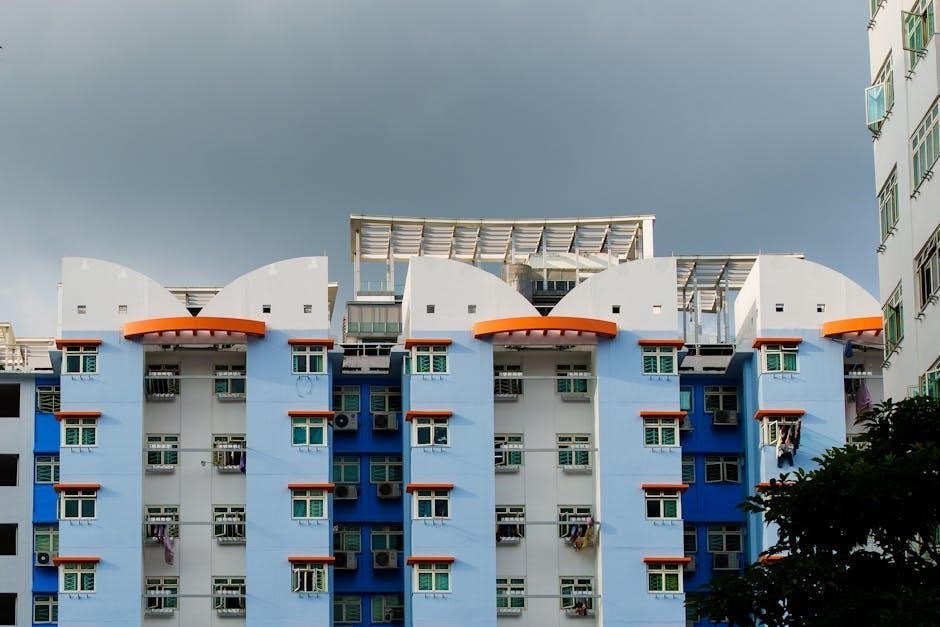
Design Considerations for 20-Unit Apartment Buildings
Efficient floor layouts, unit distribution, and sustainable practices are crucial for functional and modern apartment designs, ensuring optimal space utilization and enhanced resident comfort in multi-unit buildings.
2.1 Floor Plan Layouts for Optimal Space Utilization
Floor plans for 20-unit apartment buildings often feature compact, efficient layouts to maximize space. Central courtyards or open areas can enhance natural light and ventilation, while minimizing long hallways. Studios and 1-bedroom units are typically arranged around shared amenities, optimizing square footage. Designers prioritize functionality, ensuring each unit’s living areas are proportionate to bedrooms. Adaptability is key, with flexible layouts catering to diverse resident needs. Modern designs incorporate storage solutions and multi-functional spaces, creating comfortable living environments within limited footprints.
2.2 Unit Distribution Across Different Floors
Unit distribution in 20-unit buildings is strategically planned to balance density and accessibility. Lower floors often house studios or 1-bedroom units, while upper floors may feature larger 2- or 3-bedroom apartments. Ground floors typically include amenities like lobbies, mailrooms, and laundry facilities. Middle floors focus on residential units with consistent layouts, ensuring efficiency. Rooftop levels might offer penthouses or shared spaces, optimizing vertical space. This distribution enhances resident convenience and property value, catering to diverse tenant preferences while maintaining structural integrity and accessibility standards.
2.3 Exterior and Interior Design Elements
Exterior designs for 20-unit apartment buildings often feature modern facades with balanced proportions, incorporating materials like brick, glass, or metal for durability and aesthetic appeal. Interior layouts prioritize functionality, with open-concept living areas, minimal hallways, and natural light optimization. Units may include features like high ceilings, large windows, and versatile floor plans. Sustainable elements, such as energy-efficient windows and thermal insulation, are integrated to enhance comfort and reduce energy costs, aligning with contemporary design standards and regulatory requirements.
2.4 Incorporating Sustainable Design Practices
Sustainable design in 20-unit apartment buildings focuses on energy efficiency, water conservation, and green materials. Features include solar panels, rainwater harvesting systems, and recycled building materials. Insulation and double-glazed windows reduce heat loss, while low-flow fixtures minimize water usage. Green spaces, such as rooftop gardens, enhance biodiversity and improve air quality. These practices align with environmental standards, ensuring eco-friendly and cost-effective living spaces for residents, while also meeting regulatory requirements for sustainable urban housing.

Construction Planning and Management
Effective construction planning involves site preparation, material selection, and compliance with building codes. Proper management ensures timely project completion, budget adherence, and quality assurance.
3.1 Site Preparation and Initial Construction Stages
Site preparation is critical for 20-unit apartment building plans. It involves clearing land, demolishing existing structures, and conducting soil tests to ensure stability. Grading and leveling the ground are essential for proper drainage and foundation work. Initial construction stages include laying the foundation, setting up utility connections, and preparing the basement or parking areas. Proper planning and execution at this stage ensure a smooth transition to the next phases of building development, aligning with architectural designs and safety standards.
3.2 Material Selection for Durability and Efficiency
Material selection is vital for ensuring the longevity and efficiency of a 20-unit apartment building. Durable materials like steel, concrete, and insulated panels are often used for structural integrity. Energy-efficient options, such as double-glazed windows and high-performance insulation, reduce energy consumption. Sustainable materials, including recycled steel and low-VOC paints, promote eco-friendly construction. Proper material choices also enhance fire resistance and acoustic performance, aligning with building codes and promoting a safe, comfortable living environment for residents.
3.3 Compliance with Building Codes and Regulations
Ensuring compliance with building codes is crucial for 20-unit apartment buildings. This involves adhering to local zoning laws, fire safety standards, and accessibility requirements. Architects must incorporate fire-resistant materials, proper emergency exits, and accessible pathways for all residents. Regular inspections and certifications are necessary to meet regulatory standards. Compliance not only ensures safety but also avoids legal penalties, making it a cornerstone of successful apartment building construction and sustainable urban housing design.
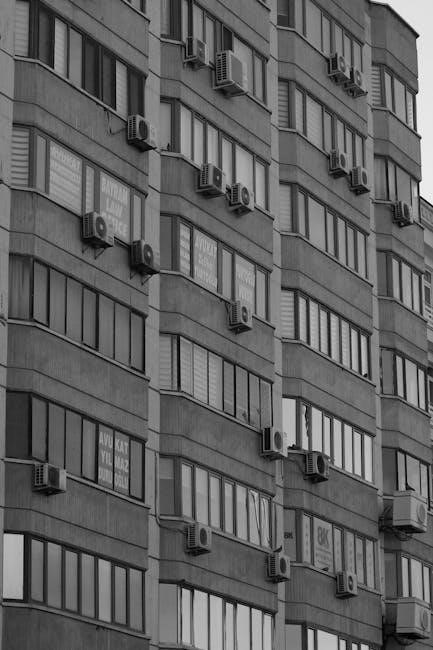
Floor Plans and Unit Distribution
Floor plans and unit distribution are critical in 20-unit apartment building designs. They ensure efficient space utilization, proper numbering of units, and balanced layout across floors for optimal functionality and comfort.
4.1 Ground Floor Plan: Layout and Amenities
The ground floor plan typically serves as the first impression of the building, featuring a welcoming lobby, parking spaces, and essential amenities. Key elements include:
- A spacious lobby with seating areas for residents and visitors.
- Dedicated parking spaces, ensuring convenient access for tenants.
- Mailroom and package storage to streamline delivery processes.
- Optional outdoor amenities like gardens or seating areas.
Designs often prioritize accessibility and security, creating a functional yet inviting space for all residents.
4.2 Middle Floor Plan: Typical Unit Arrangements
Middle floors in a 20-unit apartment building often feature a consistent layout to maximize efficiency and symmetry. Units are typically arranged around a central corridor, with staircases and elevators strategically placed for easy access. Each floor may include a mix of studio, 1-bedroom, and 2-bedroom units, ensuring diversity in housing options. Balconies or Juliette balconies are common, providing natural light and ventilation. The design emphasizes functional living spaces, with kitchens, bathrooms, and bedrooms arranged for optimal flow and privacy.
4.3 Roof Plan: Design and Functional Utilization
The roof plan in a 20-unit apartment building is designed to enhance functionality and aesthetics. Often incorporating green spaces or terraces, it provides residents with outdoor recreational areas. Solar panels and HVAC systems are typically installed to improve energy efficiency. The roof structure may include accessible storage areas and maintenance access points. Proper drainage and insulation ensure durability, while design elements like planters or seating areas add value to the building’s communal spaces for residents to enjoy.
4.4 Apartment Unit Numbering and Distribution
Apartment units are strategically numbered and distributed across floors for clarity and accessibility. Ground floor units often start with lower numbers, incrementing upward. Units may be grouped by blocks, such as Block E (E18-E29), to simplify navigation. Each floor typically houses 4-6 units, varying in size from studios to 3-bedroom layouts. The numbering system ensures logical flow, aiding residents and delivery services. This organized distribution enhances the building’s functionality and resident experience while maintaining a balanced population density across all floors.
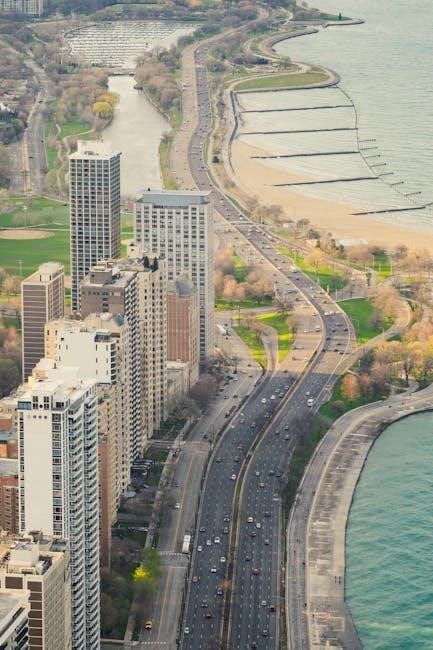
Building Codes and Regulations
Adherence to local zoning laws, fire safety regulations, and accessibility standards ensures compliance, safety, and inclusivity in apartment building design, meeting legal and ethical construction requirements.
5.1 Zoning Laws and Their Impact on Construction
Zoning laws dictate height restrictions, density limits, and setbacks for 20-unit apartment buildings, influencing the overall design and layout. These regulations ensure compatibility with neighboring structures and compliance with local development standards. For instance, a 20-unit apartment plan may require specific unit distribution to maintain setbacks and parking requirements. Non-compliance can lead to project delays or rejection. Understanding zoning laws is crucial for architects and developers to create functional and legally sound designs, ensuring harmony with urban planning goals and community needs while balancing aesthetic and practical considerations.
5.2 Fire Safety Regulations and Compliance
Fire safety regulations require 20-unit apartment buildings to include fire-resistant materials, smoke detectors, sprinkler systems, and emergency exits. These measures ensure occupant safety and structural integrity during emergencies. Compliance involves regular inspections and adherence to local fire codes, such as those specifying fire-rated walls and doors. Non-compliance can result in penalties or project halts. Architects must integrate these safety features seamlessly into designs to protect residents and meet legal standards, ensuring a balance between safety, functionality, and aesthetic appeal while safeguarding lives and property effectively.
5.3 Accessibility Standards in Apartment Buildings
Accessibility standards for 20-unit apartment buildings ensure equal access for all residents, including those with disabilities. Requirements include wheelchair ramps, wider doorways, and elevator installations. Units must feature accessible bathrooms with grab bars and lowered counters. Parking areas need designated accessible spaces, and common areas must be navigable. Compliance with these standards is mandatory, promoting inclusivity and ensuring that all residents can live comfortably and safely within the building, adhering to both legal and ethical design principles. This ensures a welcoming environment for everyone.
Sustainable and Energy-Efficient Design
Sustainable design in 20-unit buildings incorporates green materials, energy-efficient systems, and water conservation strategies. These elements reduce environmental impact, lower operational costs, and enhance resident comfort.
6.1 Energy Efficiency in Apartment Buildings
Energy efficiency in apartment buildings is crucial for reducing operational costs and environmental impact. Key strategies include installing insulation, double-glazed windows, and energy-efficient HVAC systems. Solar panels and LED lighting further enhance sustainability. Proper ventilation and smart thermostats optimize energy use. Green building materials and passive design principles also contribute to energy savings. These practices not only lower utility bills but also promote eco-friendly living, making 20-unit apartment buildings more attractive to environmentally conscious residents. Energy-efficient designs ensure long-term benefits for both occupants and the planet.
6.2 Use of Green Building Materials
Green building materials are essential for sustainable apartment construction. Recycled steel, bamboo flooring, and low-VOC paints reduce environmental impact. Energy-efficient windows and sustainable wood products enhance durability. These materials promote healthier indoor air quality and lower long-term maintenance costs. Incorporating green materials aligns with eco-friendly design principles, supporting energy efficiency and reducing carbon footprints. Builders can achieve certifications like LEED by prioritizing sustainable resources, making 20-unit apartment buildings more environmentally responsible and attractive to conscious buyers.
6.3 Water Conservation Strategies in Design
Water conservation is a key aspect of sustainable apartment design. Low-flow fixtures, greywater systems, and rainwater harvesting reduce consumption. Efficient irrigation and drought-resistant landscaping minimize water use. Designers integrate smart technologies to monitor and control water flow, ensuring optimal usage. These strategies not only lower utility costs but also promote environmental stewardship, making 20-unit apartment buildings more eco-friendly and compliant with modern sustainability standards.
Heating, Ventilation, and Air Conditioning (HVAC)
HVAC systems are crucial for energy efficiency and comfort in apartment buildings. Modern designs optimize heating, cooling, and ventilation, ensuring consistent air quality and reduced energy consumption.
7.1 HVAC System Design for Apartment Buildings
Efficient HVAC system design is essential for multi-unit apartments, ensuring consistent temperatures and air quality. Centralized systems often serve all units, while decentralized systems offer individual control. Proper ductwork layout and insulation are crucial to minimize energy loss. Zoning systems allow for customized comfort levels per unit, enhancing tenant satisfaction. Regular maintenance and smart thermostats further optimize performance, reducing operational costs and environmental impact. Modern designs emphasize energy efficiency and system reliability, meeting building codes and resident expectations.
7.2 Thermal Insulation in Walls and Floors
Thermal insulation in walls and floors is critical for energy efficiency and comfort in apartment buildings. Proper insulation reduces heat loss in winter and gain in summer, lowering energy costs. Materials like fiberglass, foam board, or reflective insulation are commonly used. Insulation also minimizes noise transfer between units, enhancing privacy. Well-insulated buildings comply with energy codes and promote sustainable design. Ensuring adequate insulation in walls and floors is vital for maintaining a consistent indoor climate and meeting modern building standards for efficiency and occupant comfort.
7.3 Heating System Options for Multi-Unit Buildings
Heating systems for multi-unit buildings require efficiency, reliability, and cost-effectiveness. Centralized systems, such as boiler-based setups, provide uniform heating across all units. Heat pumps are increasingly popular for their energy efficiency and ability to provide both heating and cooling. Radiant floor heating is another option, offering consistent warmth and space-saving benefits; Each system must be tailored to the building’s design, climate, and energy requirements to ensure optimal performance and minimize operational costs while maintaining occupant comfort.
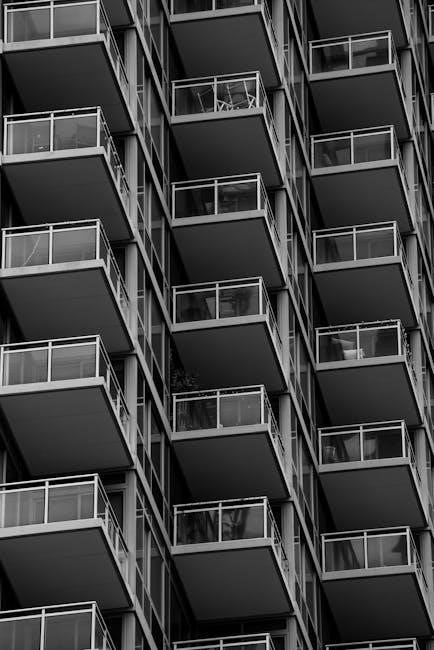
Parking and Landscaping
Effective parking and landscaping enhance functionality and aesthetics. Allocate spaces efficiently, incorporate green areas, and design outdoor amenities to create inviting environments for residents, ensuring sustainability and practicality.
8.1 Parking Space Allocation and Design
Optimal parking space allocation is crucial for 20-unit apartment buildings. Ensure each unit has at least one dedicated spot, considering compact car dimensions. Design parking areas with clear signage, adequate lighting, and access points. Use perpendicular or tandem parking layouts to maximize space. Incorporate visitor parking and ensure compliance with local zoning regulations. Consider adding charging stations for electric vehicles to meet modern demands and sustainability goals. Efficient design enhances resident convenience and property value, ensuring smooth traffic flow and safety within the complex.
8.2 Landscaping Ideas for Apartment Complexes
Effective landscaping designs for apartment complexes enhance aesthetics and functionality. Incorporate green spaces, shade trees, and flower beds to create inviting environments. Utilize low-maintenance plants and water-efficient irrigation systems. Add seating areas, walkways, and lighting to foster community interaction. Consider installing recreational spaces like small parks or gardens. Ensure designs complement the building’s architecture and meet local regulations. Sustainable landscaping not only boosts curb appeal but also provides a serene retreat for residents, improving overall quality of life and property value.
8.3 Outdoor Amenities and Recreational Spaces
Incorporate outdoor amenities like rooftop decks, BBQ areas, and picnic spots to enhance resident experiences. Design recreational spaces such as fitness courts, playgrounds, and community gardens. These areas foster social interaction and provide relaxation spots. Ensure amenities are accessible and well-maintained, aligning with modern lifestyle demands. By integrating functional and enjoyable outdoor spaces, apartment complexes become more desirable, offering a balanced urban living experience that blends privacy with community engagement, ultimately enriching residents’ daily lives and overall satisfaction.
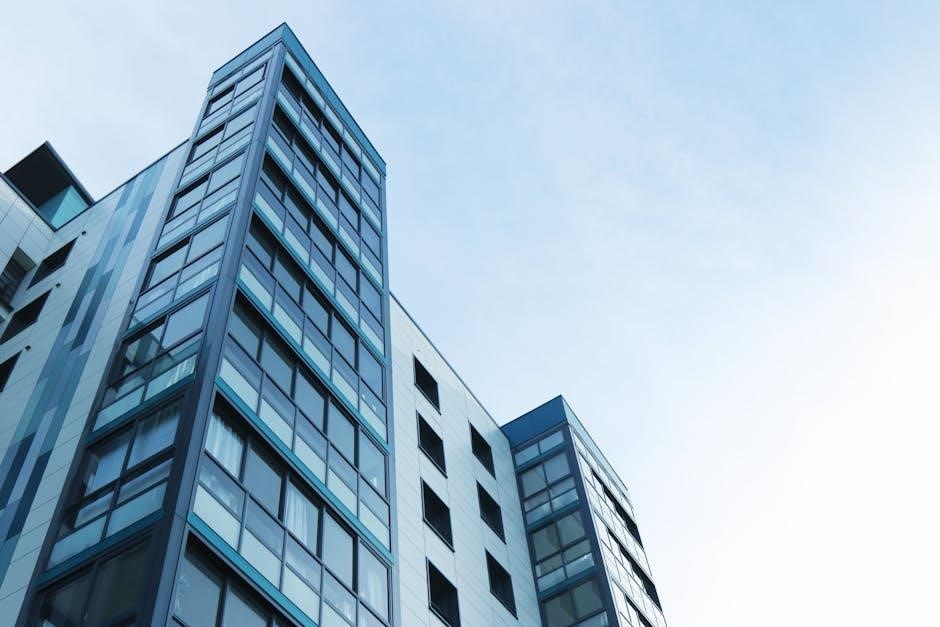
Apartment Unit Types and Sizes
20-unit apartment buildings offer a variety of unit types, including studio, 1-bedroom, 2-bedroom, and 3-bedroom units, designed to meet diverse resident needs with modern layouts and space optimization.
9.1 Studio and 1-Bedroom Unit Layouts
Studio and 1-bedroom units in 20-unit apartment buildings are designed for efficiency, offering compact yet functional spaces. Studios typically feature open-plan layouts, combining living, dining, and sleeping areas, while 1-bedroom units provide a private bedroom with a separate living space; Both layouts emphasize space-saving design, with modern finishes and natural lighting to enhance comfort. These units cater to individuals seeking affordable, low-maintenance living options, ideal for young professionals or small households.
9.2 2-Bedroom and 3-Bedroom Unit Configurations
In 20-unit apartment buildings, 2-bedroom and 3-bedroom units are designed to accommodate families and professionals seeking spacious living. These configurations often feature functional layouts, with separate living areas, modern kitchens, and ample storage. The 2-bedroom units typically range between 900 to 1,200 square feet, while 3-bedroom units offer larger spaces, ideal for growing families. These designs emphasize privacy, comfort, and practicality, catering to a diverse range of residents while maintaining aesthetic appeal and functionality.
9.4 Unit Area Variations and Space Optimization
Unit area variations in 20-unit apartment buildings ensure diverse housing options, from compact studios to spacious 3-bedroom units; Space optimization techniques, such as open layouts, multi-functional furniture, and efficient storage solutions, maximize livability. This approach allows developers to cater to different tenant needs while maintaining structural integrity and aesthetic consistency. By tailoring unit sizes and configurations, buildings can offer flexibility, enhancing both tenant satisfaction and property value.
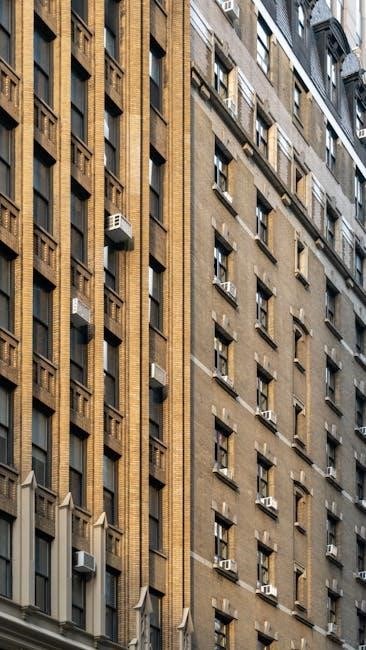
Affordable Housing Considerations
Affordable housing in 20-unit buildings involves strategic design to reduce costs while maintaining quality. This includes using cost-effective materials, optimizing space, and adhering to housing affordability standards.
10.1 Incorporating Affordable Housing Units
Incorporating affordable housing units into a 20-unit apartment building involves balancing economic viability with social responsibility. Architects and developers can achieve this by designing smaller unit sizes, utilizing efficient floor plans, and applying for government incentives that support affordable housing projects. Mixed-income housing strategies also ensure diversity while maintaining market appeal. Additionally, integrating green building materials and energy-efficient systems can reduce long-term costs, making affordable units more sustainable and attractive to residents.
10.2 Designing for Mixed-Income Housing
Designing mixed-income housing within a 20-unit apartment building requires careful planning to create a harmonious community. By offering a variety of unit sizes and pricing tiers, developers can cater to different income levels while maintaining architectural unity. Open spaces and shared amenities encourage social interaction among residents of all backgrounds. This approach not only fosters inclusivity but also enhances the building’s marketability and long-term sustainability, making it a desirable option for diverse demographics in urban areas.
10.3 Government Incentives for Affordable Housing Projects
Governments offer various incentives to promote affordable housing, such as tax breaks, grants, and density bonuses. These incentives can significantly reduce construction costs for developers. For instance, tax credits for low-income housing projects can attract investors. Additionally, streamlined approval processes and waived fees further support affordability. By leveraging these incentives, developers can create more affordable units within their 20-unit apartment building plans, contributing to community needs while ensuring project viability and profitability.
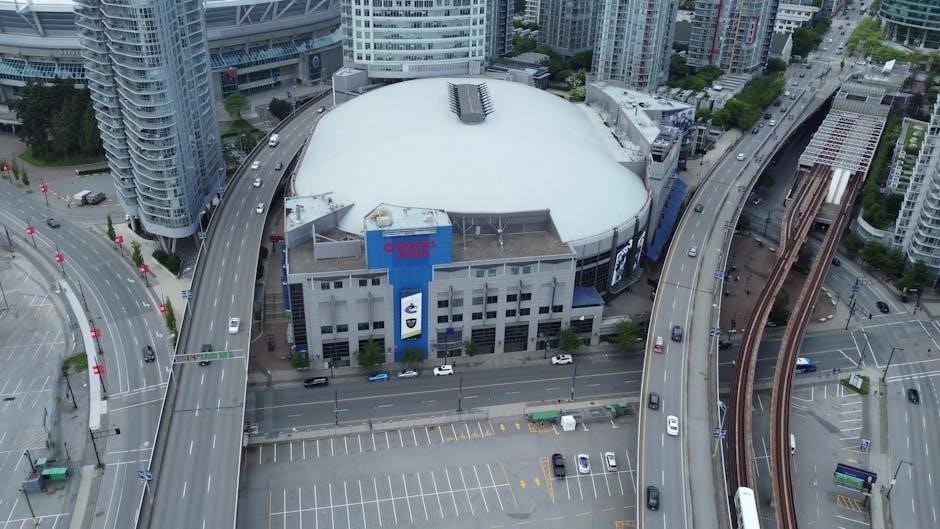
Project Examples and Case Studies
Discover real-world examples of successful 20-unit apartment building projects, showcasing innovative designs and practical applications of PDF plans for inspiration and benchmarking.
11.1 Successful 20-Unit Apartment Building Projects
Explore inspiring examples of 20-unit apartment buildings, such as the four-story development near Fairfield-Black Rock Station, featuring modern designs and efficient layouts. Another notable project includes a mixed-use building in downtown areas, blending residential and commercial spaces. These projects highlight innovative use of space, compliance with local regulations, and incorporation of sustainable practices. Studying these examples provides valuable insights into successful implementations of 20-unit apartment building plans, offering practical lessons for developers and architects.
11.2 Lessons Learned from Real-World Developments
Real-world developments of 20-unit apartment buildings reveal key lessons, such as the importance of site preparation and compliance with zoning laws. For instance, a project in Manchester faced challenges due to historic building constraints, emphasizing the need for thorough planning. Additionally, incorporating affordable housing units, as seen in Pinecrest, enhances project viability. These lessons highlight the importance of adaptability, regulatory compliance, and community needs in successful apartment building developments, offering practical insights for future projects.
11.3 Case Study: A 20-Unit Apartment Building Design
A case study of a 20-unit apartment building in Manchester highlights a successful design approach. The project involved converting a former gym into a two-story building, offering modern units with efficient layouts. The design incorporated essential amenities while adhering to local regulations. This example demonstrates the practical application of PDF plans, showcasing how scalable designs can meet both developer and resident needs effectively, ensuring functionality and aesthetic appeal in urban settings.
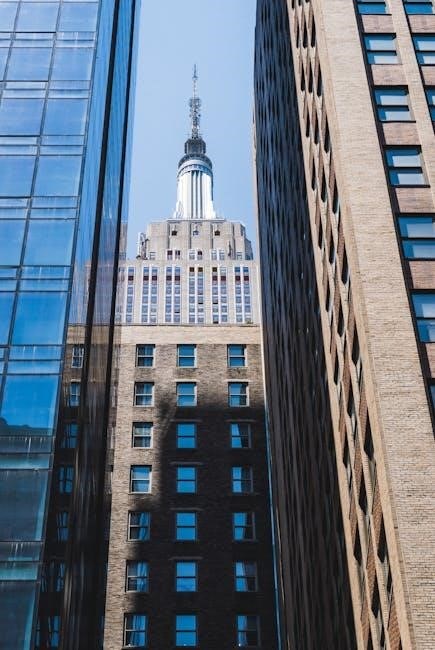
Resources for Downloading PDF Plans
Find 20-unit apartment building plans PDF on platforms like Etsy, offering detailed CAD files, floor layouts, and construction designs. These resources provide essential blueprints for developers and architects.
12.1 Websites Offering Apartment Building PDF Plans
Popular platforms like Etsy and architectural design websites offer 20-unit apartment building PDF plans, featuring detailed CAD files, floor layouts, and construction blueprints. These resources provide developers and architects with customizable templates, ensuring compliance with building codes and design standards. Many sites also offer instant downloads, making it easy to access and utilize these plans for construction projects. Additionally, platforms like Pinterest and specialized architectural forums showcase a variety of modern and efficient designs for multi-unit buildings.
12.2 How to Choose the Right Plan for Your Needs
When selecting a 20-unit apartment building PDF plan, consider factors like site location, zoning laws, and unit distribution. Ensure the design aligns with your budget and meets local building codes. Evaluate the number of bedrooms, parking spaces, and amenities. Verify that the plan includes detailed floor layouts and complies with sustainability standards. Always check reviews or consult with professionals to confirm the plan’s suitability for your construction goals. This ensures a seamless and efficient building process.
12.3 Local Authorities and Building Plan Approvals
Before commencing construction, submit your 20-unit apartment building PDF plans to local authorities for approval. Ensure compliance with zoning laws, fire safety regulations, and accessibility standards. The approval process may require detailed floor layouts, elevations, and structural designs. Engage with architects and engineers to address any concerns. Timely approvals prevent delays, ensuring your project adheres to legal and safety requirements. Proper documentation and adherence to regulations are crucial for a smooth construction process.